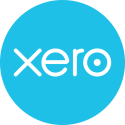3 Keystone Small Business Financial Statements and How to Understand Them
By: Shay James

Starting a business is something many people dream about. Creating a new business brings an amazing feeling but, once you’re into it, things can become overwhelming.
Finances are often an area where new creative small business owners can quickly feel out of their depth and uncertain about how to keep organized on the numbers that matter.
When you are a small business owner, there are a lot of terminologies you need to know. All of the new-to-you financial jargon can make your head spin. Fortunately, once you start becoming familiar with the different terms, they’re easier to understand and just as easy to apply to help move your business forward.
Without a clear financial picture, it’s very difficult for a business to scale effectively. When getting started, it’s best to seek understanding of the financial statements every business uses. Beginning with financial statements will set the foundation of your financial knowledge and give you context for numbers important to your business.
There are three keystone financial statements that every business owner should be familiar with:
The profit and loss statement
The balance sheet
The statement of cash flow
Together, these three statements provide valuable insight into the financial health of a company.
Let’s take a look at what these three statements are so you can understand exactly how they impact your business. Once you know how to navigate these invaluable tools, you’ll be able to leverage these statements to advance your creative business.
Keystone Financial Statement #1: Profit and Loss
You may see a profit and loss statement abbreviated as the “P&L statement” or simply, “P&L”. To make matters slightly more confusing, the P&L is often also referred to as an “income statement.”
This type of small business financial statement is a summary of the revenue and expenses for a business during a specific period. A profit and loss statement usually highlights information per quarter, per half, or per fiscal year.
The purpose of this small business financial statement is to provide information that a company can use to figure out how to increase profits. By looking at this statement, small businesses can determine where they need to increase revenue or reduce costs.
There are two ways a business can set up a profit and loss statement.
Cash method: Often used by smaller businesses or individuals to track when cash goes into a business and comes out of a business.
Accrual method: Tracks revenue rather than only tracking cash. With the accrual method, a business accounts for expected revenue in addition to the actual cash coming in. The accrual method also takes into account anticipated expenses.
If you’d like examples of what a profit and loss statement looks like, you can look online. There, you will find templates that can help increase your understanding of what this statement is. You can also use one of the templates you find for your own business so you don’t have to worry about creating your own from scratch.
Keystone Financial Statement #2: The Balance Sheet
The balance sheet is one of the most important financial statements for your business. This statement looks at a business during a certain point in time and provides information on liabilities, assets, and shareholder equity.
Basically, this is a financial statement for small businesses that creates a picture of what a company owns or owes as well as how much money shareholders are investing in the business.
Because the balance sheet is just a snapshot of the company’s finances at a single point in time, it can’t give any indication of trends. This is why it’s important to compare multiple balance sheets taken from previous periods.
One key thing to remember when it comes to the balance sheet is that it should always balance. Assets should always match expenses and shareholder equity. When it doesn’t balance, this is a key sign that something may be wrong and needs a closer look.
Keystone Financial Statement #3: Statement of Cash Flow
When you run a creative small business, it’s important to know where the cash is coming from and where it’s going. This is where the statement of cash flow comes in. Small business financial statements provide information on how well a company is managing the cash coming in.
Operating a company requires a constant flow of cash in one way or another. Revenue will come in and needs to be used to pay off debts and cover the basic operating expenses before it can be considered profit.
The cash flow statement provides insight into where revenue is generated and how that money is being spent. This statement is important because it helps a business to see exactly how much cash they have on hand to run the operations of the business, pay down debts, or invest in growth opportunities.
Why Is It Important for You to Understand Small Business Financial Statements?
When you’re a creative small business owner, it’s vital you know and understand all of the financial aspects of your company. If you are in a growth stage, it is especially important you know exactly how much additional risk you can take on in order to expand your operations.
You won’t have a clear picture of your financial standing without using these financial statements to support your business. The three keystone financial statements work best when they are used together to provide a comprehensive picture of the financial health of your creative small business.
Getting a crystal clear picture of the finances in your business is essential for being able to scale your operations. Once you know where your business stands, you’ll be able to make informed decisions to help your business grow to its full potential.
Navigate Small Business Financial Statements with Lamplight Advisors
Keeping track of and making sense of your small business’s finances can be tough. But you don’t have to do it alone. At Lamplight Advisors, we’ll help you wade through the terminology so you understand not just financial statements, but everything else relevant to running a successful operation.
There’s so much to think about when you’re operating a creative small business, and we understand it can get overwhelming fast. When it comes to the financial health of your business, you want to make sure you have a clear understanding of the entire picture. That’s why we’re here.
To see if we can help you navigate the three keystone financial statements, click here to schedule a conversation today.






